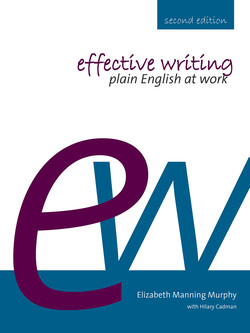Читать книгу Effective Writing - Elizabeth Manning Murphy - Страница 10
На сайте Литреса книга снята с продажи.
1.4 Writing is communication – how does it work?
ОглавлениеWriting is a means of communication. For communication to occur at all, there has to be:
an idea
a reason for wanting to pass the idea on – a purpose
a means of doing so – for example, writing
actual encoding, or writing, the message
the sending of the message.
These are the responsibilities of the sender of the message. But communication is not complete until a receiver has received and understood it. So the receiver:
receives the message and
decodes it – that is, understands the writing if writing is the code used.
So far, so good; but the sender still does not know that the receiver has got the message correctly, if at all. There has to be feedback to complete the communication cycle. The receiver has to respond.
Figure 1.3 Communication cycle
If the response is what the sender expected, the communication has been effective. For example:
Sender issues instructions for the factory to close at 3 pm.
Response: factory ‘knock-off’ whistle blows at 3 pm.
or
Sender asks for a particular file.
Response: the file duly appears on the sender’s desk.
If the response is not what the sender expected, communication is ineffective: the communication cycle has broken down somewhere. For example:
Sender writes guidelines to accompany a complicated form.
Response: public constantly phone to seek clarification.
Possible cause: language of form or guidelines is too complex for general public users.
Communication breakdown can be avoided by making sure that you:
stick to one topic whenever possible – if you really must write about two topics in the one email, for example, label them clearly with appropriate subject and side headings
keep your purpose in mind while writing – be clear about whether you are writing to inform or to get information
make sure that both you and your reader understand the relevance of the document – that is, where it fits into a wider social context or into a set of similar documents. For example:Consider the audience who will read or use the document – who they are, what they know, and what you want them to know or do.Use language that is appropriate to the audience, the purpose and the topic.Package your document attractively and professionally (see Chapter 13, Principles of effective writing and document design).
